序章
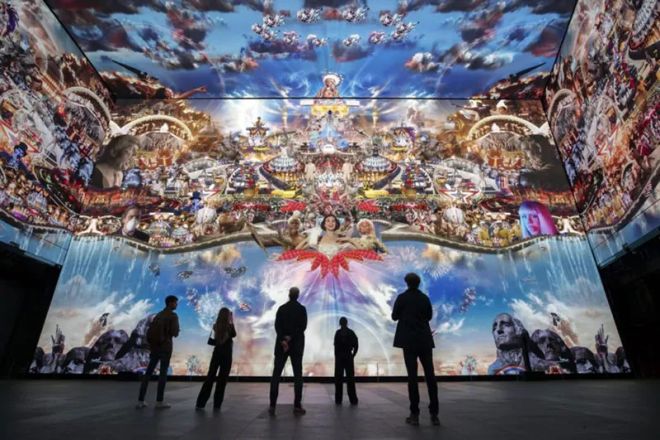
Imagine that when you step into a space surrounded by LEDスクリーン, historical scenes instantly reappear in front of you, as if you were in a palace thousands of years ago or had personally experienced a thrilling historical battle. This is not only a visual feast but also a spiritual touch and a deep cultural dialogue.
This article will take you to a deeper understanding of how immersive LED screens reshape the exhibition methods of 博物館 and reveal how it uses the power of technology to give new life to ancient cultural heritage.
1. Overview of immersive LED screen technology
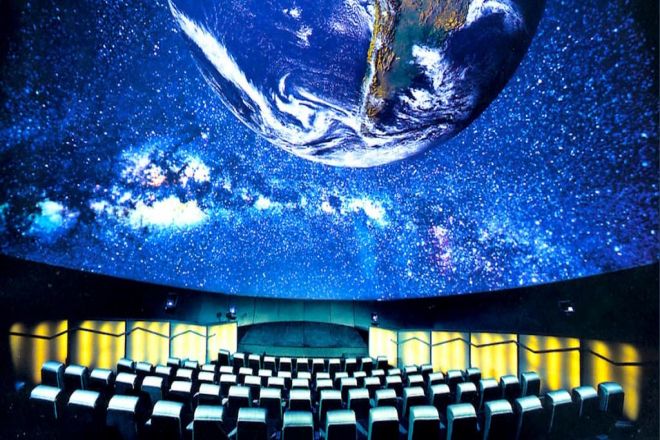
Immersive LED display screens use advanced software control technology to achieve seamless splicing between multiple display units.
This means that whether it is a huge curved screen or a surrounding three-dimensional space, it can present a continuous and smooth visual effect as if the entire space is surrounded by images and video content. At the same time, the software also supports real-time playback and adjustment of dynamic content, ensuring that the audience can immerse themselves in a constantly changing and fascinating visual feast.
In large-scale events, such as live broadcasts of sports events such as the Olympics and the World Cup, LED display screens bring unprecedented viewing experience to the audience with their huge size, clear picture quality, and shocking visual effects.
In commercial displays, whether it is window advertising in ショッピングモール, display walls at 展示会, or background screens on ステージ, LED display screens have attracted countless eyes with their flexible and creative display methods.
It is these successful application cases that have laid a solid technical and market foundation for the application of LED display screens in the museum field.
Museums began to realize that by introducing immersive LED display technology, they can break the limitations of traditional exhibitions and provide audiences with a more vivid, intuitive and interactive viewing experience. As a result, a museum revolution driven by technology and based on culture has quietly emerged.
2. The innovative experience of immersive LED museums
1). Scene reproduction, history “comes alive”
In immersive LED museums, the boundaries of history are completely broken. By using high-definition LED screens, museums can construct realistic historical scenes.
Whether it is the ancient battlefields with raging flames or the magnificent palace banquets, they seem to have been reborn. When the audience is in them, they can not only see the beauty of the details of these scenes but also feel the historical weight they carry.
In addition, the museum also cleverly combines multi-sensory elements such as sound and smell, such as simulating the sound of horse hooves and swords on the battlefield or the fragrance of flowers and wine in the palace, which further enhances the sense of immersion, making the audience seem to have really traveled through time and space and communicated face to face with historical events and figures.
2). Interactive experience, doubled sense of participation
The immersive LED museum is not only a place for viewing but also an interactive space for the audience to participate.
The museum has designed a variety of interactive links, such as touching the screen to trigger a specific storyline, allowing the audience to choose the direction of exploration according to their own interests, or affecting the changes in the picture through the audience’s actions, such as waving to control the switching and zooming of the picture, etc., which greatly improves the audience’s participation and interest.
In addition, the museum also uses AR (augmented reality)/VR (virtual reality) technology combined with LED display screens to create a more colorful interactive experience.
The audience can wear VR equipment to enter the virtual historical scene for exploration or use AR technology to superimpose virtual elements into the real world to achieve a wonderful experience of combining virtual and real.
3). Art display, unlimited creativity
The immersive LED museum is also a new stage for artistic creation. Artists use LED screens as a creative medium to create amazing light and shadow artworks through the changes of light and shadow and the matching of colors.
These works not only show the unique perspective and creative talent of the artists but also add a strong modern art atmosphere to the museum.
At the same time, the dynamic light and shadow changes of the LED screen can also delicately show the beauty of details and emotional expression of the artwork, such as highlighting the three-dimensional sense of the sculpture through the light and dark contrast of light and shadow, or conveying the emotional color of the painting through the gradual change of color.
This new way of display not only enhances the audience’s aesthetic experience but also makes the artwork itself glow with new vitality.
3. Case analysis of immersive LED museums
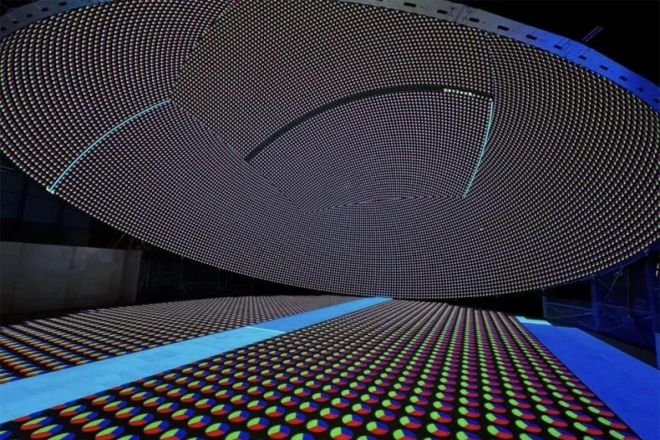
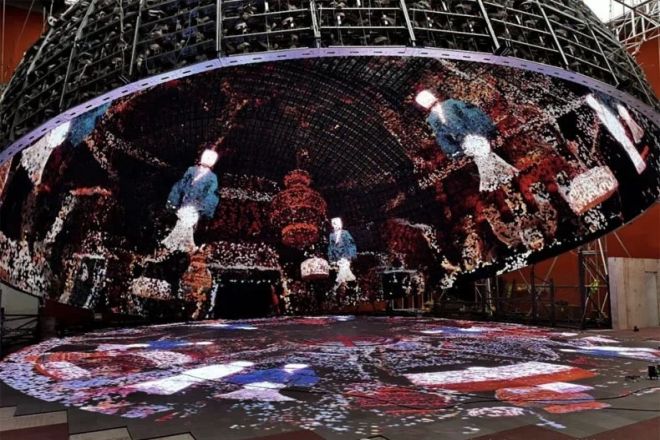
1). Immersive LED display screen exhibition of Mawangdui Han Dynasty culture at Hunan Museum, China
On the occasion of the 50th anniversary of the archaeological excavation of the Mawangdui Han Tomb, the Hunan Museum, China, together with the China Digital Library and the Harvard University Chinese Art Laboratory, jointly launched the “Life Art-Mawangdui Han Dynasty Culture Immersive Digital Exhibition.”
This exhibition is not only a tribute to the important cultural heritage of the Mawangdui Han Tomb but also a new presentation of the charm of ancient culture through modern scientific and technological means, bringing a cultural feast across time and space to the audience.
1). 展示 Features and Highlights
- Immersive Experience:
The exhibition makes full use of immersive LED display technology and reproduces the tomb structure, cultural relics layout, and rich unearthed cultural relics of the Mawangdui Han Tomb through cutting-edge multimedia technologies such as ultra-high-definition cultural relics scanning three-dimensional projection and naked-eye 3D.
The audience seems to travel through time and space, and is in the court of the Western Han Dynasty, and personally experience the style and cultural atmosphere of that era.
- Multi-dimensional display:
The exhibition consists of three artistic themes: “time and space,” “yin and yang,” and “life,” which fully display the artistic achievements and ideological essence of the Mawangdui Han Dynasty culture.
Among them, the “time and space” section shows the coffin chamber structure and overall layout of the Mawangdui Han Tomb through multimedia narrative; the “yin and yang” section vividly interprets the “yin and yang dispersion and gathering” concept in the Mawangdui Han Tomb through vertical projection and digital image transition technology
The “life” section uses immersive LED ball screens and interactive dynamic graphic design, allowing the audience to feel as if they are in the “from the earth to the sky” ceremony depicted in the T-shaped silk painting of the Mawangdui Han Tomb, and deeply feel the romance of life transformation and ascension.
- Integration of academics and technology:
The exhibition integrates global academic resources, combines the most cutting-edge research results of the global academic community on the Mawangdui Han Dynasty culture, and deeply explores the life philosophy of “harmony between man and nature” in the Han Dynasty culture carried by the Mawangdui Han Tomb.
At the same time, the exhibition also uses cutting-edge multimedia technologies such as generative algorithm art and special-shaped LED ball screens to give the audience a deep cognitive experience and artistic shock from China’s early cosmic life view.
1.2). Exhibition effect and impact
Since the opening of the exhibition, it has attracted a large number of visitors with its unique display method and profound cultural connotation.
The audience said that through the use of immersive LED display technology, they felt the charm of Mawangdui Han Dynasty culture more intuitively and also had a deeper understanding of ancient China’s cosmology and life.
In addition, the exhibition has attracted widespread attention from the academic community and all walks of life and has made positive contributions to the promotion and dissemination of China’s excellent traditional culture.
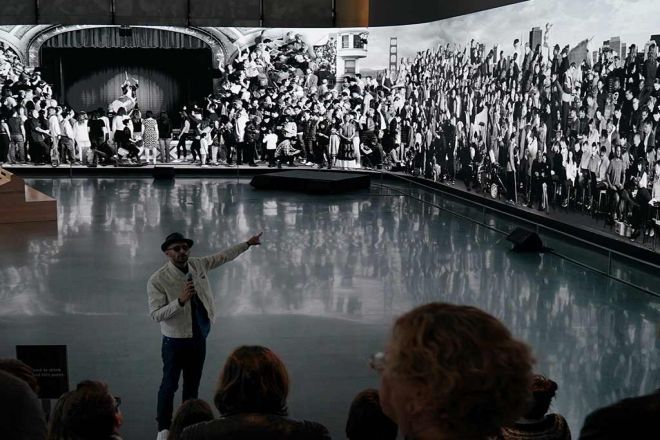
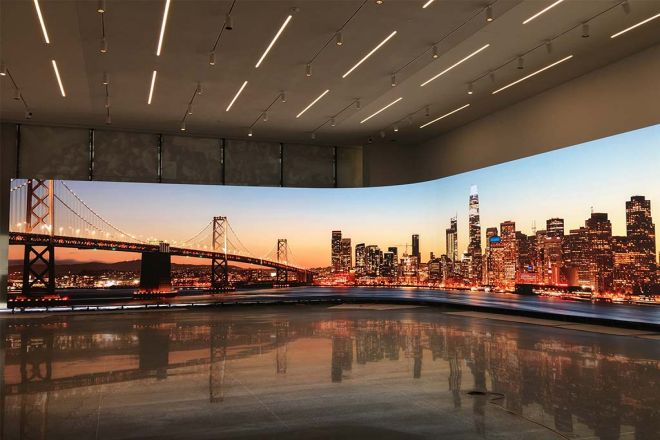
2). San Francisco Museum of Modern Art, USA
In the Museum of Modern Art in San Francisco, an unprecedented immersive LED museum space is attracting the attention of art lovers around the world.
This unique space is centered on the masterpiece “San Francisco Chronicles” by artist JR and uses advanced LED display technology and multimedia interactive installations to create an unprecedented art feast.
As soon as visitors step into this immersive LED museum, they are immediately surrounded by dazzling light and shadow.
The 107-foot-high curved LED video wall is like a huge screen, surrounding the 90-degree space, completely wrapping the audience in the history and reality of San Francisco constructed by light and shadow.
his piece, with its extreme pixel pitch of 6 mm, presents amazing and delicate picture quality, making every detail vivid.
“San Francisco Chronicles” is not only a visual feast but also a touch of the soul. Artist JR uses carefully selected images and sounds to vividly show the diverse faces and profound heritage of the city of San Francisco.
From busy streets to quiet parks, from historical relics to modern buildings, each work seems to tell the story of San Francisco, allowing visitors to travel through time and space and experience the changes and growth of the city firsthand.
In addition to visual and auditory enjoyment, this immersive LED museum also focuses on interactive experiences with visitors. Through innovative multimedia interactive devices, visitors can participate in the creation and presentation of works and have dialogues and exchanges with artists across time and space.
This interactivity not only enhances visitors’ sense of participation and experience but also allows them to more deeply understand and feel the connotation and charm of artworks.
4. Challenges faced
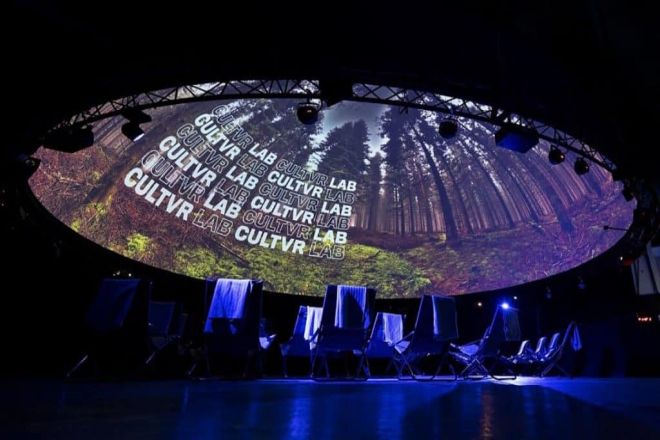
1). Challenge Analysis
Although the application prospects of immersive LED display technology in museums are broad, its development path is not smooth, and it still faces many challenges:
- High construction cost:
Building an immersive LED museum requires a large number of LED displays, high-performance playback equipment, and complex control systems. The purchase and installation costs of these hardware facilities are high, which is a big burden for many museums.
- Technical maintenance difficulty:
The immersive LED display system involves multiple technical fields, including LED display technology, image processing technology, multi-screen splicing technology, etc. Its maintenance and maintenance require professional technicians. Once a fault occurs, the difficulty and cost of repair are relatively high.
- Content creation threshold:
In order to give full play to the potential of immersive LED displays, high-quality and highly interactive content needs to be produced. However, the creation of such content requires interdisciplinary teamwork, including historians, artists, technicians, etc., with a high creation threshold and a long production cycle.
2). Response strategy
In response to the above challenges, we can propose the following response strategies:
- Government support:
The government can encourage museums to introduce immersive LED display technology by providing financial subsidies, tax incentives, and other policies. At the same time, the government can also set up special funds to support the research development and innovation of related technologies.
- 技術革新:
Technology manufacturers should continue to increase R&D investment, improve the performance indicators of LED display screens, and reduce production costs. At the same time, explore more intelligent and convenient system maintenance solutions to reduce the operating burden of museums.
- 国境を越えた協力:
Museums should strengthen cooperation with universities, scientific research institutions, cultural enterprises, and other institutions to promote the creation and development of immersive exhibition content jointly. Through cross-border cooperation, we can gather advantageous resources from all parties and improve the quality and efficiency of content creation.
結論
Looking back on the application history of immersive LED display screens in museums, we can’t help but marvel at the unlimited potential of this technology.
It not only breaks the boundaries of traditional museum exhibitions, allowing history and culture to be presented to the audience in a more vivid and intuitive way; it also stimulates the audience’s enthusiasm for participation through interactive and experiential design so that they can deeply feel the charm and power of culture while enjoying a visual feast.
However, we should also be aware that the application of immersive LED display screens in museums still faces many challenges, such as high construction costs, complexity of technical maintenance, and innovative requirements for content creation. But it is these challenges that point out the direction of our future efforts.
最後に、LEDディスプレイスクリーンについてさらに詳しく知りたい場合は、 ご連絡ください。
